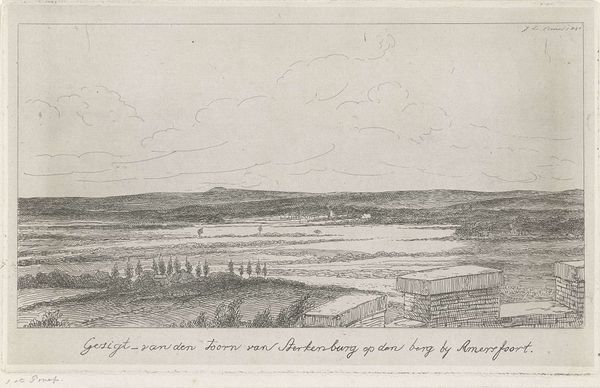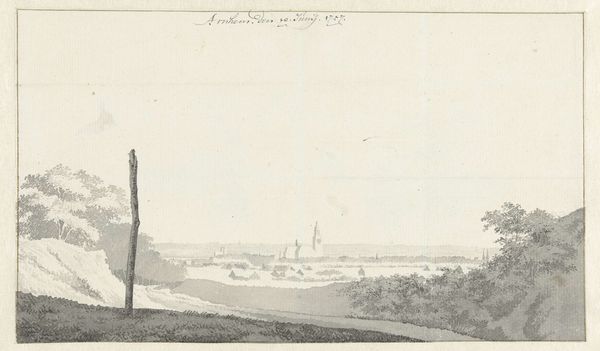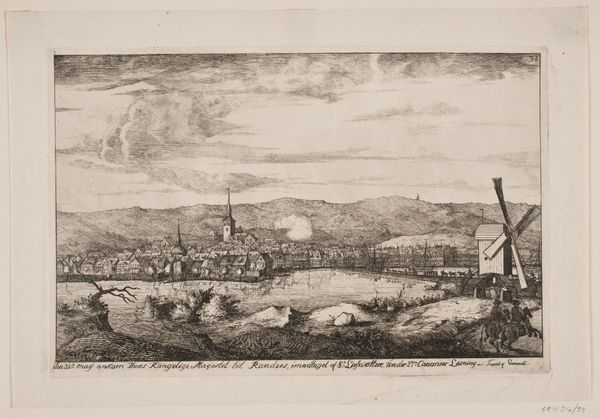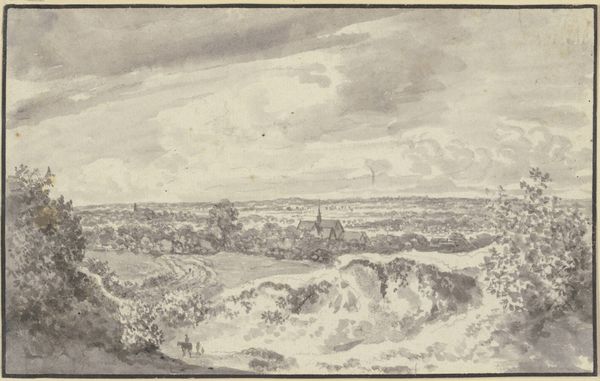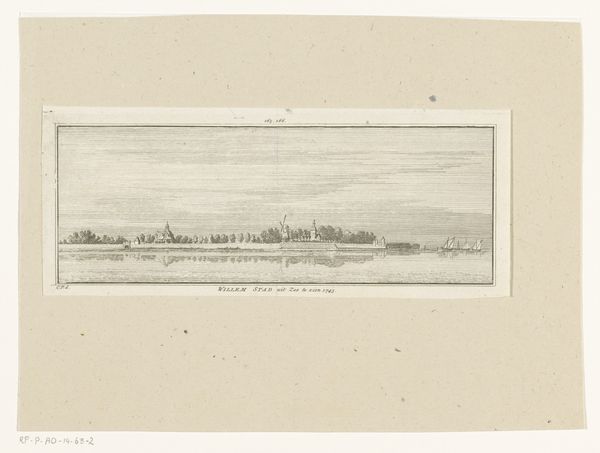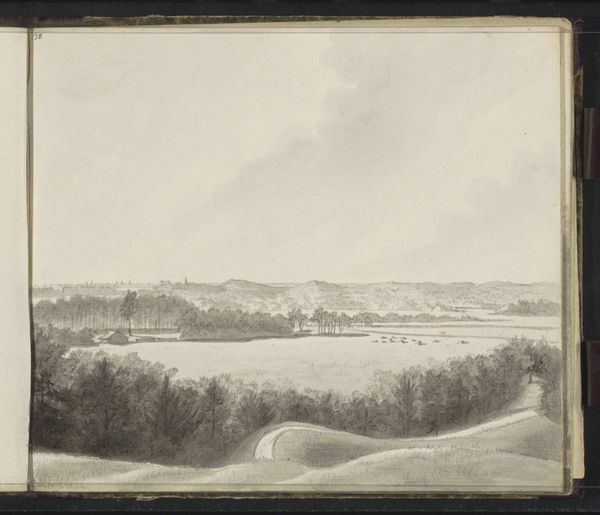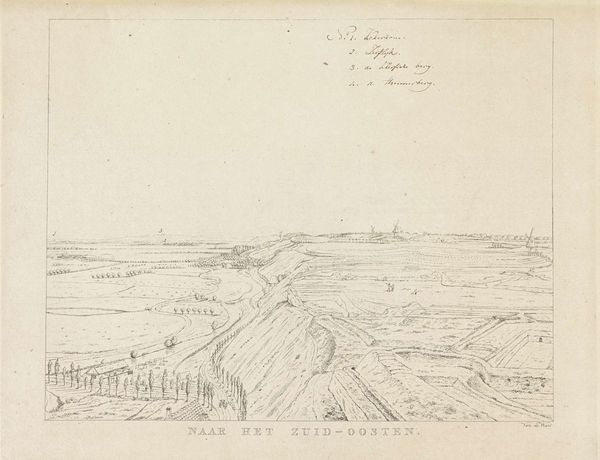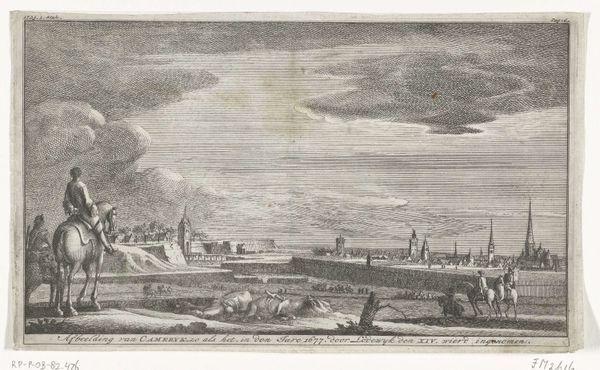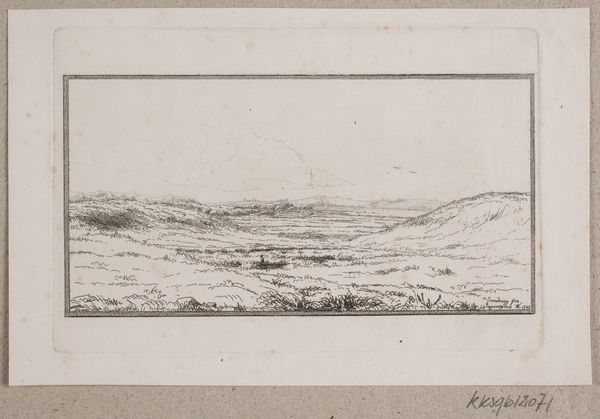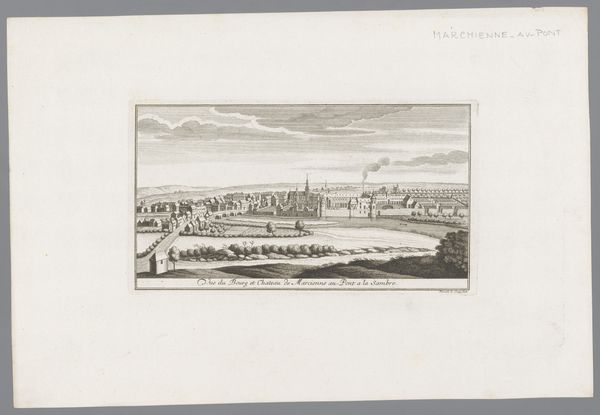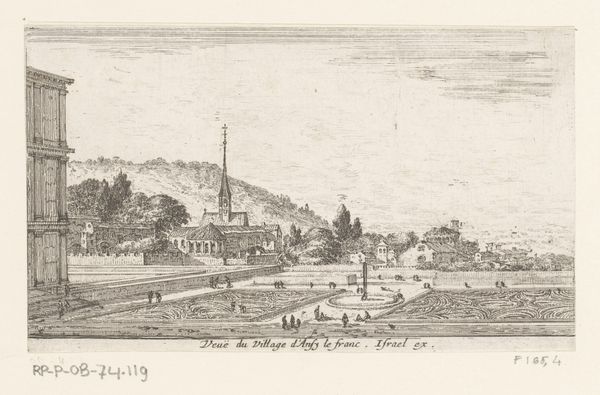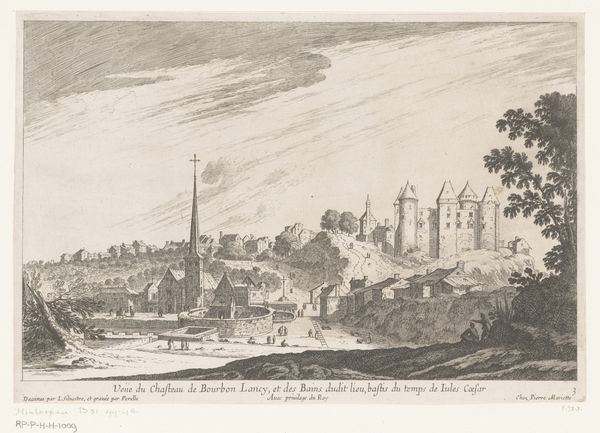
print, engraving
#
dutch-golden-age
# print
#
old engraving style
#
landscape
#
river
#
engraving
#
realism
Dimensions: height 155 mm, width 248 mm
Copyright: Rijks Museum: Open Domain
Curator: This is "Landschap rond Amersfoort," or "Landscape around Amersfoort," an engraving from 1851 by Jacobus Ludovicus Cornet. It resides here at the Rijksmuseum. Editor: It has this incredibly tranquil quality, almost melancholic. The perspective, the hazy horizon—it's as if you're looking back into a fading past. Curator: Cornet was working within a Dutch landscape tradition, aiming for a truthful representation. Engravings like these had a specific social role; they documented places, often accessible to a wider public than painted views. They were also important to how the places were imagined. Editor: Look at the texture created by the engraving lines. It really brings a tactility to the stones and foliage, even the sky. Considering the labor involved, creating this level of detail through etching feels almost like a form of devotion to the land itself. Curator: Absolutely. And this piece provides insight into the political and social landscape. Landscapes, like portraiture, can showcase ideas about nationhood and regional identity during periods of rapid change. There’s pride expressed in showing what these lands look like, in great detail. Editor: I'm also fascinated by how Cornet utilizes light and shadow. Note how the shadow falling on the structure emphasizes its presence in the landscape, almost grounding the vastness of the scene, demonstrating how integral the built environment becomes with the landscape. It becomes an anchor. Curator: The location, Amersfoort, held significance as a trading center and for its surrounding agricultural lands. So representing it became synonymous with representing what the Dutch found important at the time. Editor: Reflecting on this engraving, it feels like it connects us to not only a specific place but to the processes of landscape representation and what it asks us to consider about its role. Curator: And for me, seeing how the medium itself contributed to the evolving national identity makes it all the richer.
Comments
No comments
Be the first to comment and join the conversation on the ultimate creative platform.
